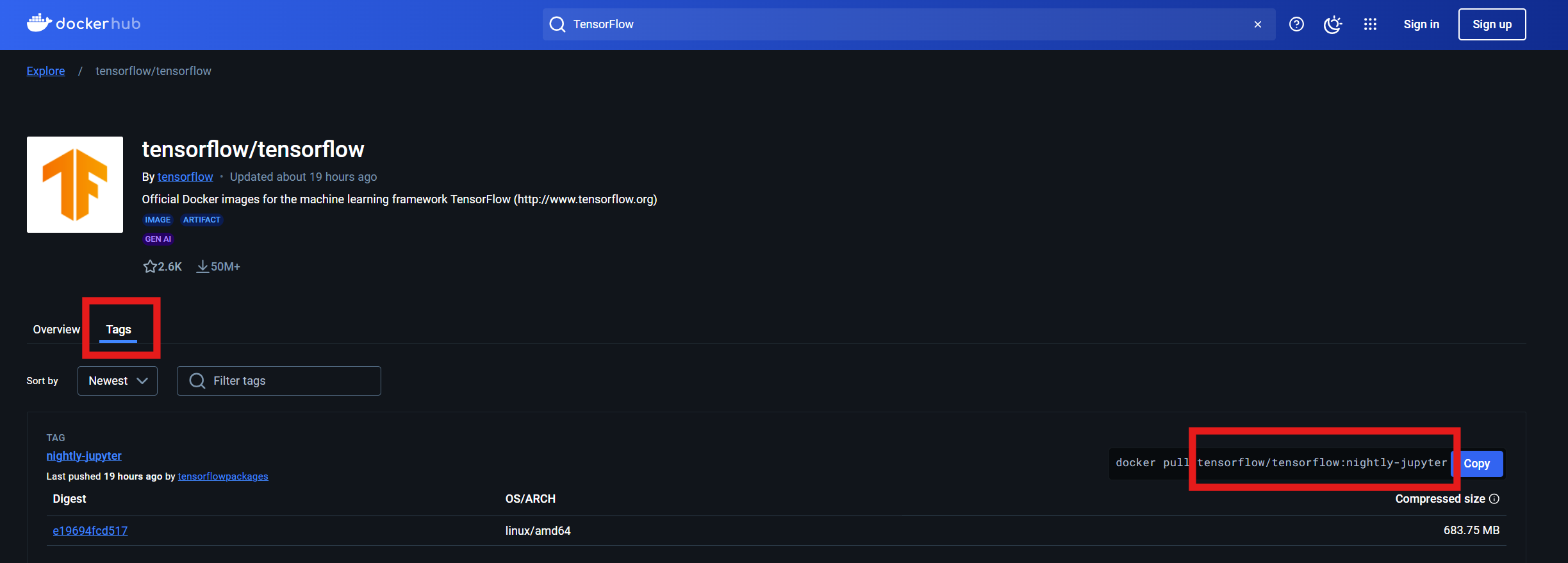Getting Containers for AI-LAB
Most applications on AI-LAB run inside containers - self-contained environments that include all the software and dependencies you need. AI-LAB uses Singularity to run containers.
What is a Container?
A container is like a pre-packaged software environment that includes:
- The application (Python, PyTorch, TensorFlow, etc.)
- All required libraries and dependencies
- System tools and configurations
- Everything needed to run your code
Think of it as a complete, portable computer environment that works the same way every time.
Three Ways to Get Containers
- Use pre-downloaded containers - Quickest option
- Download containers - For specific versions
- Build your own container - For custom environments
Which Method Should You Choose?
| Method | When to Use | Time Required | Difficulty |
|---|---|---|---|
| Pre-downloaded | Getting started, common frameworks | Instant | Easy |
| Download | Need specific version, latest updates | 10-20 minutes | Easy |
| Build | Custom requirements, specific packages | 30+ minutes | Advanced |
1. Pre-downloaded Containers
The easiest way to get started is using containers that are already available on AI-LAB. These are stored in /ceph/container and are regularly updated.
Available Containers
Check what's available:
ls /ceph/container
Common containers include:
- Python: Basic Python environment
- PyTorch: Deep learning with PyTorch
- TensorFlow: Deep learning with TensorFlow
- MATLAB: MATLAB computational environment
Using Pre-downloaded Containers
You can use these containers directly by referencing their full path:
# Example: Using PyTorch container
/ceph/container/pytorch/pytorch_24.09.sif
Finding the Right Container
To see what's in each container directory:
ls /ceph/container/pytorch/ # See available PyTorch versions
ls /ceph/container/tensorflow/ # See available TensorFlow versions
2. Download Containers
If you need a specific version or container not available in the pre-downloaded collection, you can download containers from online repositories.
Popular Container Sources
- NVIDIA NGC Catalog: Optimized containers for AI/ML
- Docker Hub: Large collection of community containers
Step 1: Find Your Container
NVIDIA NGC Catalog:
- Visit NGC Catalog
- Search for your framework (e.g., "TensorFlow", "PyTorch")
- Click "Get Container" to get the URL
- Copy the URL (e.g.,
nvcr.io/nvidia/tensorflow:24.11-tf2-py3)

Docker Hub:
- Visit Docker Hub
- Search for your container
- Click on "Tags" to see available versions
- Copy the URL (e.g.,
tensorflow/tensorflow:nightly-jupyter)

Step 2: Set Up Singularity Environment
Before downloading, configure Singularity for optimal performance:
# Set up directories for Singularity
export SINGULARITY_TMPDIR="$HOME/.singularity/tmp/"
export SINGULARITY_CACHEDIR="$HOME/.singularity/cache/"
# Create the directories
mkdir -p $SINGULARITY_CACHEDIR $SINGULARITY_TMPDIR
Step 3: Download the Container
Use srun to download the container (this may take 10-20 minutes):
# Example: Download TensorFlow container
srun --mem 40G singularity pull docker://nvcr.io/nvidia/tensorflow:24.03-tf2-py3
Command explanation:
srun --mem 40G: Run on compute node with 40GB memorysingularity pull: Download and convert containerdocker://: Indicates this is a Docker container URL
Step 4: Use Your Downloaded Container
After download completes, you'll find a .sif file in your current directory:
ls *.sif # List downloaded containers
Use it just like pre-downloaded containers:
# Example usage
srun singularity exec --nv tensorflow_24.03-tf2-py3.sif python my_script.py
3. Build Your Own Container (Advanced)
For specialized requirements or custom environments, you can build your own containers using Singularity definition files.
Step 1: Create a Definition File
Create a Singularity definition file (.def) that describes your container:
nano my_container.def
Here's a simple example for a Python container:
Bootstrap: docker
From: ubuntu:20.04
%post
# Update system
apt-get update
apt-get upgrade -y
# Install Python and pip
apt-get install -y python3 python3-pip
# Upgrade pip
pip install --no-cache-dir --upgrade pip
# Install Python packages
pip install --no-cache-dir numpy matplotlib torch
%test
# Test that Python works
python3 --version
python3 -c "import numpy, matplotlib, torch; print('All packages imported successfully')"
Definition file sections:
- Bootstrap: docker: Use Docker as the base
- From: ubuntu:20.04: Base operating system
- %post: Commands to run during build
- %test: Commands to test the container
Step 2: Set Up Environment
Configure Singularity for building:
# Set up directories
mkdir -p $HOME/.singularity/tmp
mkdir -p $HOME/.singularity/cache
export SINGULARITY_TMPDIR=$HOME/.singularity/tmp
export SINGULARITY_CACHEDIR=$HOME/.singularity/cache
export TMPDIR=$HOME/.singularity/tmp
export TEMP=$HOME/.singularity/tmp
export TMP=$HOME/.singularity/tmp
Step 3: Build the Container
Build your container using srun:
srun --mem=40G singularity build --fakeroot --tmpdir $SINGULARITY_TMPDIR my_container.sif my_container.def
This process may take 10-30 minutes depending on the complexity.
Step 4: Test Your Container
Test that your container works:
# Test basic functionality
srun singularity exec my_container.sif python3 --version
# Test package imports
srun singularity exec my_container.sif python3 -c "import torch; print('PyTorch version:', torch.__version__)"
Step 5: Use Your Container
Use your custom container just like any other:
srun singularity exec --nv my_container.sif python3 my_script.py
Tips for Building Containers
- Start simple: Begin with basic containers and add complexity gradually
- Use
--no-cache-dir: Prevents pip from storing package files - Test thoroughly: Use the
%testsection to verify everything works - Document your choices: Add comments explaining why you chose specific versions
Advanced Definition File Options
For more complex containers, you can use additional sections:
%environment: Set environment variables%runscript: Define what happens when the container runs%labels: Add metadata to your container%help: Add help text
See the Singularity documentation for complete details.
You are now ready to proceed to learn about using containers to run jobs
